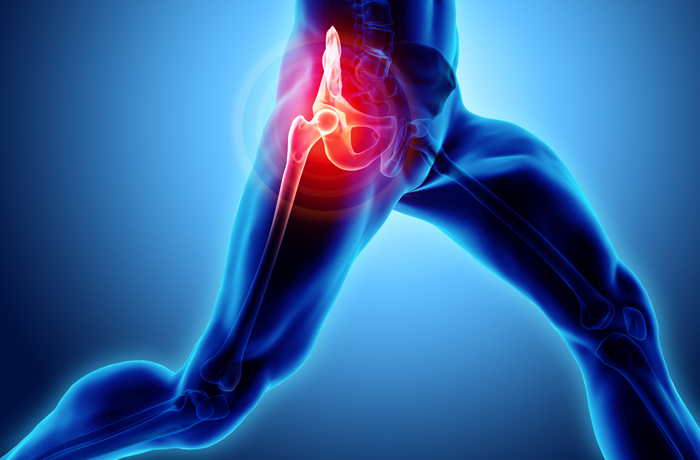Hip Arthroscopy Surgery in C-scheme, Jaipur
With the advancement of technology, arthroscopy has acted as a boon to revolutionize traditional hip surgeries. Hip arthroscopy has become a widely practised medical approach by surgeons, moving a step ahead of conventional hip surgery.
What is the meaning of Hip Arthroscopy?
Hip arthroscopy is a medical approach of using minimally invasive surgical techniques to detect and find any cure to the issues of the hip joint and the soft tissues surrounding it. It involves the use of a specialized instrument called the arthroscope to perform the surgical procedure.

What are the benefits of hip arthroscopy at Apollo Spectra, Jaipur?
- It causes very little trauma and injury to the hip joint to lessen pain
- The incisions made are smaller in size, causing less scarring
- The technique can treat osteoarthritis in the hip. Hence, the patient might not need a hip replacement.
- The patient can return home the same day the surgeon performs Hip Arthroscopy.
- If it cannot treat osteoarthritis, it can push the progress of the ailment by treating it early.
- The recovery period is short.
When to see a doctor at Apollo Spectra, Jaipur?
- If you experience excruciating pain in your hip region for days, it is best to consult a doctor.
- If previous medicines, injections, exercises, and physiotherapy have failed to reduce the pain.
Request an appointment at Apollo Spectra Hospitals, Jaipur
Call 1860 500 2244 to book an appointment.
How to prepare for the procedure?
Your doctor at Apollo Spectra, Jaipur will advise you to stop taking blood-thinning medicines like aspirin and ibuprofen.If you are a smoker, the doctor will ask you to stop smoking for some time. The doctor will prescribe you some tests that you will need to undergo before Hip Arthroscopy, like CT Scans and X-rays. Abstain from eating the night before the surgery. You will require to make changes back at your home before you come for the surgery to ensure you give proper rest to your body.
How do surgeons perform hip arthroscopy?
- The surgeon will give you general anaesthesia or regional anaesthesia.
- Surgeon will mark sites for incision. After this, the surgeon makes some small-sized incisions in the points.
- The staff will help the surgeon position the fluoroscope or the portable X-ray machine.
- The surgeon will inject a sterile fluid to create pressure to hold the joint open.
- The surgeon puts in a guidewire followed by a thin-tubed cannula.
- After removing the wire, the surgeon puts the arthroscope inside via the cannula.
- After viewing the joints from different incision points, he can treat the damaged tissues.
- He can keep on changing the fluid once a while during the surgery.
- After checking the ligament condition, the cartilage surrounding it, and signs of inflammation and osteoarthritis, the surgeon will take out the instrument.
- Your doctor will stitch the incision points after this.
How is the recovery process after Hip Arthroscopy?
- After the surgery, the doctor at Apollo Spectra, Jaipur will prescribe medicines to keep the pain at bay.
- He will ask you to put ice daily to reduce the swelling in the surgery site.
- You might need to wear a brace, and the doctor will guide you with it.
- The doctor will advise you to rest as much as possible and will ask you to keep all the weight off of your legs. He can even ask you to use crutches to walk for a week or two.
- The surgeon will recommend physiotherapy for at least six weeks after surgery.
What are the complications associated with Hip Arthroscopy?
- Nerve injures due to traction.
- Bleeding
- General allergic reaction to anaesthesia
- Infection in the surgical site
- Pulmonary embolism
- Heterotopic Ossification (formation of bone in soft tissue.)
- Fluid Extravasation (where the white blood cells ooze out from the blood vessels to the nearby tissues.)
- Blood clot
CONCLUSION
The tissue damage in Hip Arthroscopy is minimal, and it secures the muscles preventing deep scarring. The stay at the hospital is limited and even the time taken for recovery is short. Hence, Hip Arthroscopy is an effective and safe surgical alternative for all patients with severe hip pain.
The people best fit for this surgery are those with a healthy body and age group ranging from nineteen to sixties.
Your doctor will advise you to wear a hip brace for at least two weeks from the surgery. He will guide you regarding the clothes you can wear along with it. You might also need crutches to help you walk for some time.
Sleep on your back till you recover completely. If you feel like turning to a side, slide a pillow in between your knees. Then lie on the opposite side of the surgery area. If you lie uncomfortably, you will end up hurting the surgery site.
Symptoms
Our Top Specialities
NOTICE BOARD
CONTACT US
CONTACT US
 Book Appointment
Book Appointment


.svg)
.svg)
.svg)
.svg)








